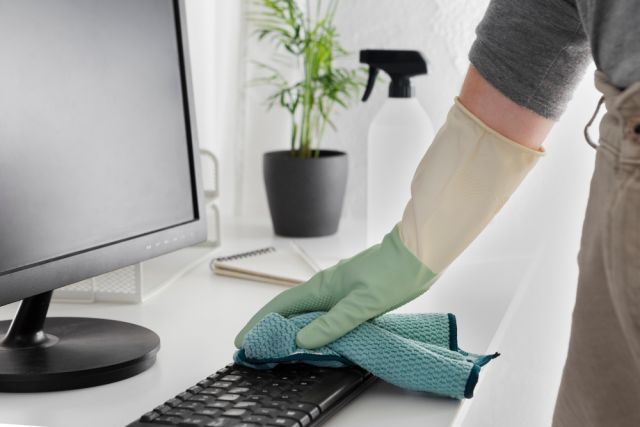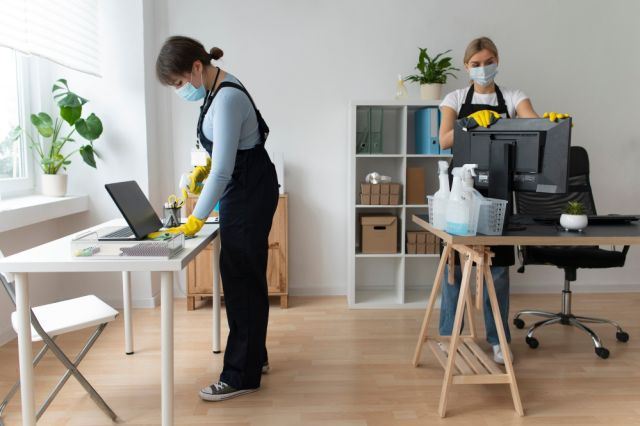Navigating the Dilemma: Non-odour cleaning chemicals and the perception of cleanliness

People’s perception of cleanliness can depend on the smell left behind after the job is done.
As the saying goes, seeing is believing. Many don’t believe something to be true without hard evidence. Is your shampoo really washing your hair if it’s not bubbling up? The answer is yes, but people are sceptical, so some manufacturers add lathering agents despite the fact that they have little to no impact on the product’s effectiveness.
In a similar way, people’s perception of cleanliness can depend on the smell left behind after the job is done. Does it smell like bleach? Is there a fresh scent filling the room? If not, clients may question how clean the environment really is.
This presents a unique challenge for facility cleaning services that use non-odour or fragrance-free chemicals and cleaning products. How do they signal cleanliness to their clients without relying on strong scents?
This blog post will explore non-odour chemicals, how they prove to be effective and why their use is a wise choice for commercial cleaning providers.
How are non-odour cleaning products beneficial?
Although they have been manufactured to be fragrance-free, these products are engineered to provide a deep clean, targeting dirt, stains and bacteria. They are certainly as effective as their scented counterparts and there are other ways to demonstrate this.
These products are generally residue-free, meaning that surfaces do not feel sticky or coated after the cleaning, which is common with scented cleaners, a lack of residue can contribute to a perception of true cleanliness.
Although clients may worry about the lack of a ‘clean smell’, they should be encouraged to recognise the lack of any odour whatsoever. Any lingering smells of mould or mildew will be eliminated after cleaning with fragrance-free products is carried out because instead of merely masking nasty odours, these cleaners eliminate them.
Questions have always been raised about strong-smelling cleaning products and solvents and their health impacts. Research¹ has shown that these types of cleaners emit particles known as Volatile Organic Compounds (VOCs) including limonene, alpha-pinene and beta-pinene. These ultimately become airborne and circulate through the environment. Due to their microscopic size, they can be inhaled easily and enter the lung tissue, which can have a number of consequences and lead to some health issues.
Respiratory discomfort, asthma, coughing, sinus pain and difficulty breathing are all examples of this and for anyone who already suffers from allergies, the impact could be heightened.
Similar issues occur when secondary organic aerosols (SOAs), which are found in many strong-smelling cleaning chemicals², are released into the environment. Known for irritating the respiratory tract, and inflaming the lunch tissue, these chemicals should not be inhaled.
Fragrance-free products contain little to no VOCs or SOAs and are hypoallergenic, greatly minimising the risk of these health issues to those in the environment.
In these ways, fragrance-free products can keep the area clean and protect staff well-being without compromising the air quality, which is key for productivity. Researchers found³ that 20% of the oxygen we breathe in is used for brain function and that decision-making processes, multi-tasking abilities and response times are reduced when taking these actions in a room with poor ventilation and air quality.
There is a sustainability element to non-odour cleaners as well. Many are eco-friendly and biodegradable with recyclable packaging, sourced from reputable suppliers. This is becoming more of a priority for many companies today and it’s another example of how a small switch in your operations can have a significant impact. Taking a more eco-conscious approach is good for the environment but also for the company’s reputation.
Addressing consumer scepticism
Historically, strong-smelling products such as bleach, ammonia, and ethanol were the go-to for effective cleaning, so it’s natural that customers will be a little sceptical about the fragrance-free option.
This is where communication comes in, if you’re a commercial office cleaning company, then offer to educate your clients on how these products work, how effective they are and why they’re a good choice. If you’re a client and you’re feeling sceptical, ask your cleaning partner for more information.
You can follow this up with a demonstration to instil further confidence in the products. Show how effectively they can remove dirt and stains and discuss the fact that after this there is no smell or change in the air quality.
Non-odour cleaning products are gradually becoming a more popular choice among facility cleaning services because of their effectiveness, safety and environmental friendliness.
However, due to the traditional perception of cleanliness and its close ties to strong smells, it’s important for commercial office cleaning providers to address scepticism head-on through explanations and demonstrations that will reinforce confidence.
If you’re considering employing professionals to keep your workspace clean and healthy, do your research and consult a commercial office cleaning company like GJK Facility Services that can offer a non-odour service. Contact us today to discuss how a change of products could make a difference in your business.
References
- Volatile organic compounds emitted by conventional and ‘green’ cleaning products in the U.S market. Alexis M Temkin, Samara L Geller, Sydney A Swanson, Nneka S Leiba, Olga V Naidenko, David Q Andrews, Chemosphere, Volume 341
- Cleaning products and air fresheners: exposure to primary and secondary air pollutants, William W. Nazaroof, Charles J. Weschler, Atmospheric Environment, Volume 38, Issue 18
- National Library of Medicine at the National Center for Biotechnology Information, 2007




